What Is Za'atar And How Can You Use It In The Kitchen?
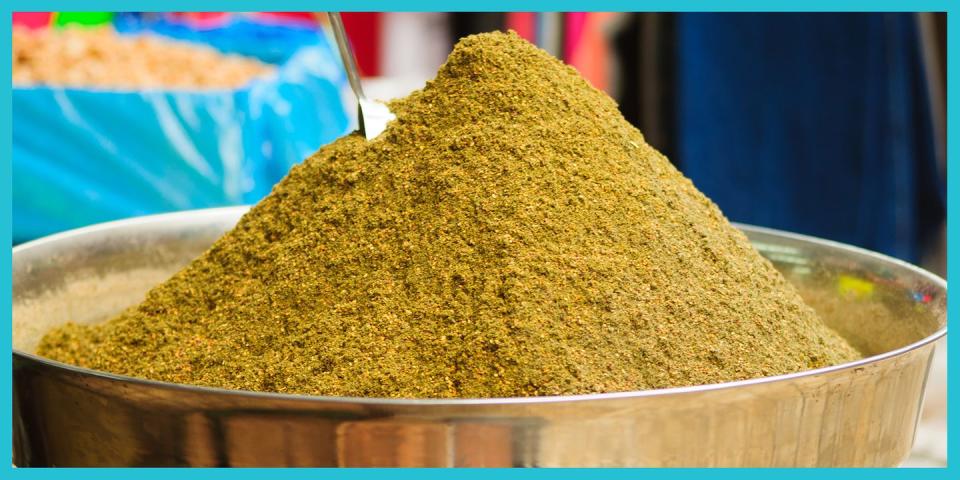
If you've never tasted za'atar, the spice mix might just change your life. It has a perfect combination of flavors—zesty, earthy, bright—that you can sprinkle on so many foods to add a boost. Boring chicken breast? Plain ol' egg? Lackluster roasted veggies? Just add za'atar!
To learn more about what's in za'atar and how to use it, we chatted with Tarik Fallous, owner and chef at the Lebenese restaurant Au Za'atar, and Jumana Bishara, co-owner of the Middle Eastern restaurant Tanoreen, both in New York City.
Jump to:
What Is Za'atar?
Where Does Za'atar Come From?
How To Use Za'atar
What Does Za'atar Taste Like
Where To Buy Za'atar
How To Make Za'atar
Dishes That Use Za'atar
What Is Za'atar?
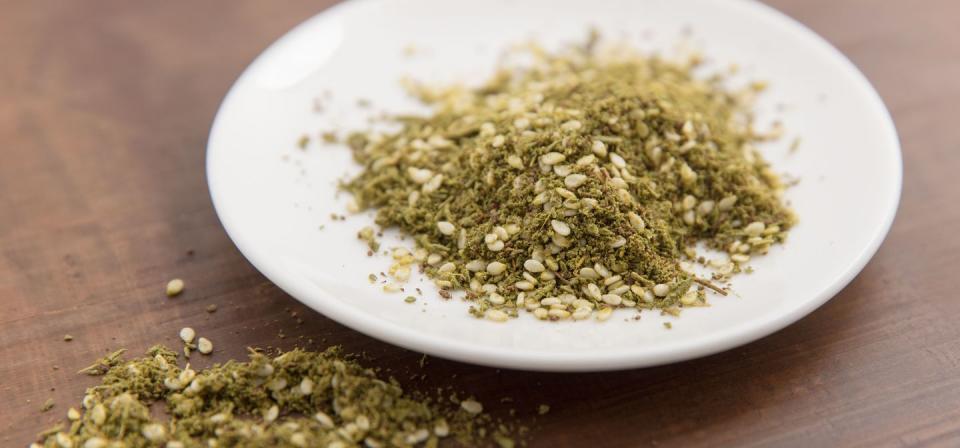
"Za’atar is both an herb, called za’atar akdar, and a spice blend that is used as a condiment," Fallous said. The herb za’atar is also called wild thyme or Syrian oregano and is often used in za’atar the spice blend. In this article, we are focusing on the spice blend.
"There are many different varieties depending where in the Arab world you have it," Bishara said. "The ratios change, but it's usually a mix of dried oregano and/or thyme, sesame seeds, and sumac." Sometimes cumin, coriander, and anise are used as well. And in some parts of the Middle East, the mix is brightened with lemon zest.
Where Does Za'atar Come From?
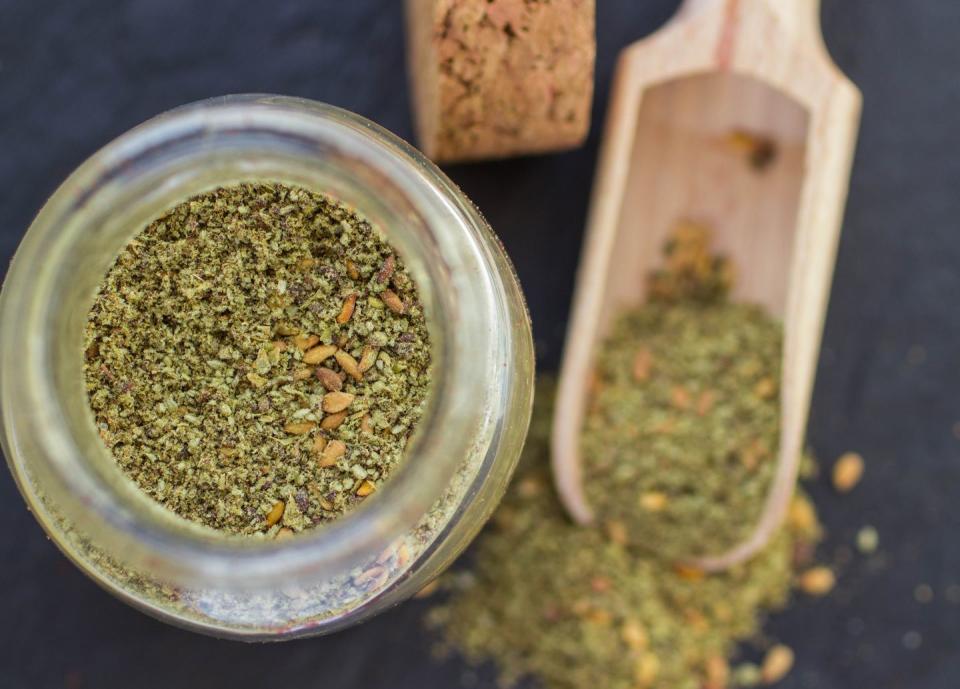
Za’atar is native to the Middle East and has been made for centuries. The word za’atar means a mix of any dried plants. Before it was considered an ingredient, it was used in medicine. Hippocrates would treat the common cold with za’atar in the fifth century BCE.
"Za’atar is said to be good for the brain," Fallous said. "When we were kids, our parents would always prepare breakfast that included za’atar, especially on exam days."
How To Use Za'atar

Za'atar is often used as a rub for grilled and roasted meats and vegetables. It's commonly seen in chicken, cauliflower, potato, and eggplant dishes. At Fallous' restaurant, Au Za'atar, they sprinkle it on a flatbread called Manoushet Za’atar. Fattoush salad made with greens, tomatoes, cucumbers, radish, onions, and a lemon-sumac vinaigrette also has za’atar. And they make a za'atar aioli to serve with sumac fries.
"You can also mix it with extra virgin olive oil and use it as a dip for bread," Fallous added, noting that he likes it on croissants and other baked goods, eggs, salads, and labne (a strained yogurt).
What Does Za'atar Taste Like?
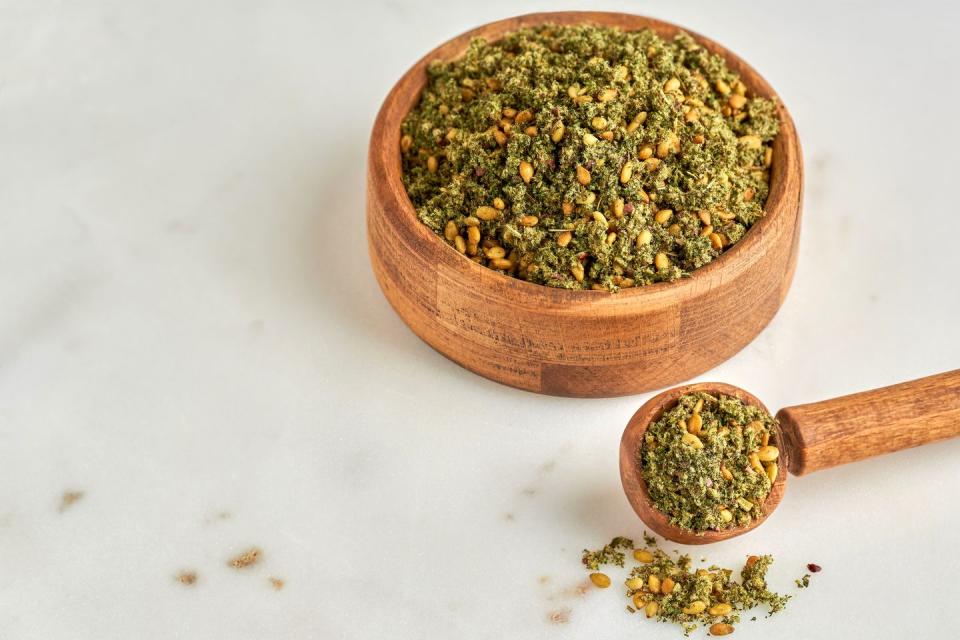
The flavor of za'atar can vary based on the proportions of the blend. But most za'atar mixes that come in a dried form are herby, nutty, zesty, and crunchy.
Where To Buy Za'atar
Check your area for specialty grocery stores that may sell za'atar. You want to look for a variety that is fragrant and green, not clumpy, so you know it's fresh. If you can't find any nearby, look online. This one from New York Shuk is made with za’atar leaves, sumac, sesame, and olive oil.
How To Make Za'atar
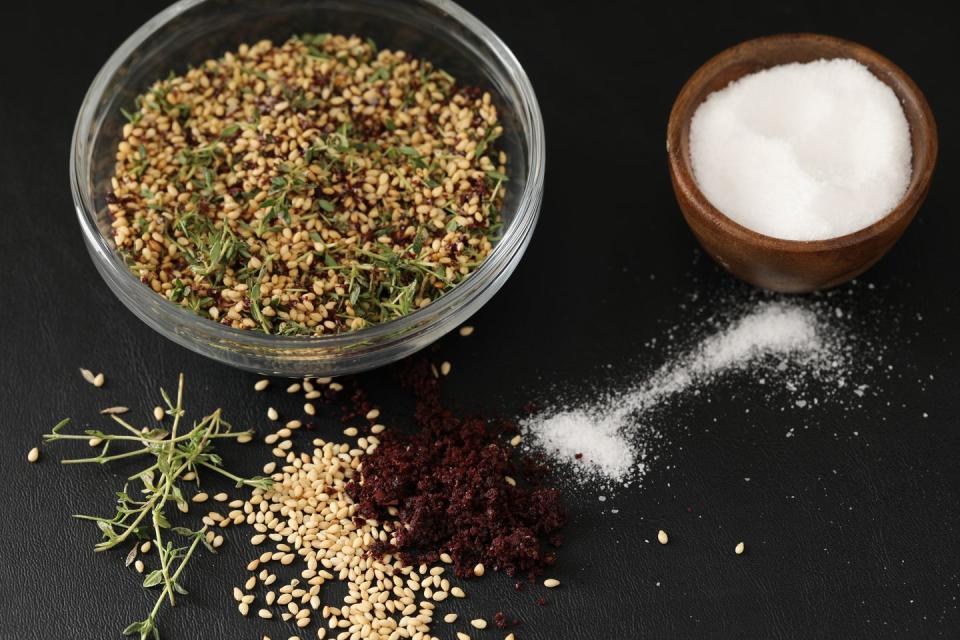
"Dry and grind fresh herbs on your own if you're so inclined," Bishara said. "Fresh oregano would work for this." Experiment with different ingredient blends and proportions. Fallous changes up his ratios depending on what he is making. "I prefer my za’atar to be green and not have so much sumac or roasted sesame [for the manoushet za’atar flatbread]," he said. "But when making a za’atar croissant, I prefer to have more sesame to add that nuttiness and crunch. If using za’atar in chicken or lamb dishes, I like to have more sumac in the blend, so the meat dish would come out zesty and aromatic."
Dishes That Use Za'atar
You Might Also Like

 Yahoo Finance
Yahoo Finance 